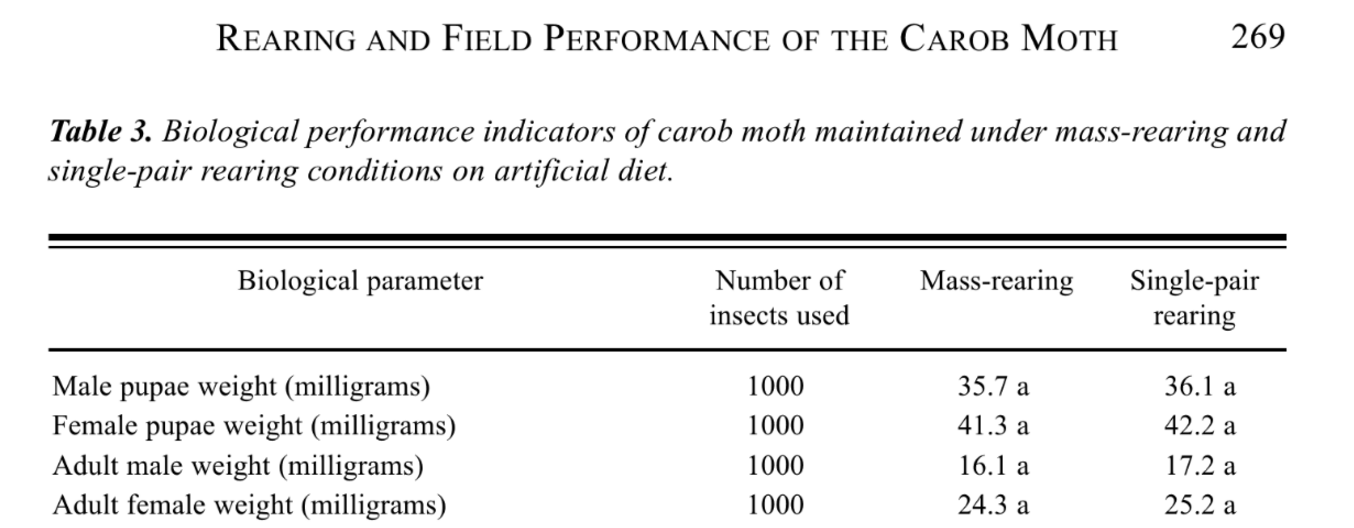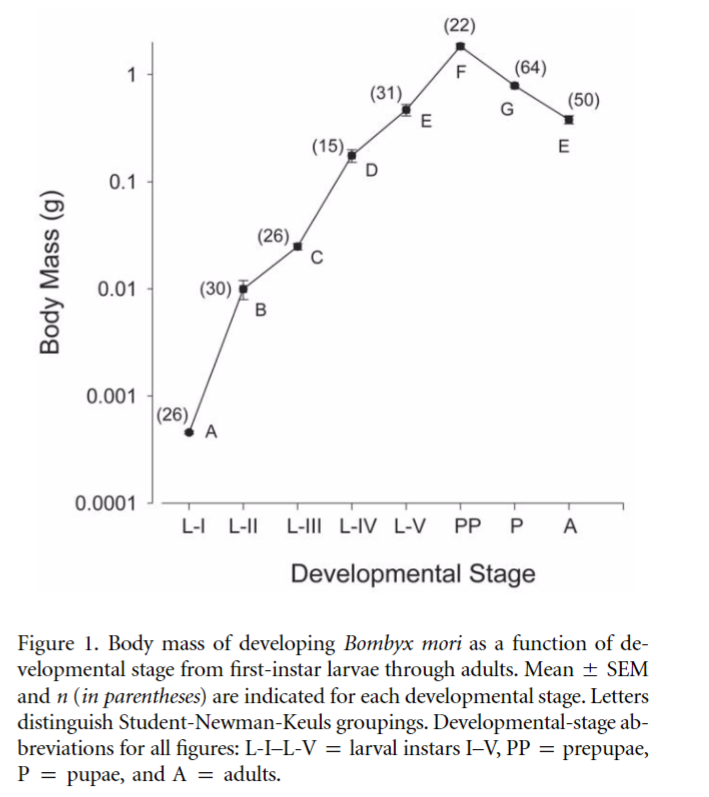Summary
This piece presents estimates for the masses of various bugs. It suggests that a prototypical bug might be approximated at around 3 mg, although one could reasonably choose a value several times higher or lower.
Estimates
An aphid may weigh 0.2 mg.
This book suggests an average insect weight of 1 mg, although it's in the context of a math problem, so it's not clear how accurate the author intended it to be.
Termites have masses around 1.5 to 2.5 mg. Smil (2013) assumes a mass of 2 mg per termite (p. 21) though doesn't say where he got the number.
A typical worker ant weighs 1-5 mg.
An adult housefly weighs maybe 12 mg.
While spiders aren't insects, they are in a similar category as far as moral consideration. Yong (2008) reports that Philoponella vicina spiders weigh "14mg at most."
This book reports the following weights for carob moth larvae and adults:

This page says about butterflies:
0.3 gram for a large swallowtail to 0.04 gram for a small butterfly called the elf. My guess is that the female Queen Victoria Birdwing, the world's largest butterfly, would weigh 2 or 3 grams and one of the World's smallest butterflies, the Pygmy Blue, would weigh only a few thousandths of a gram.
Assuming the average insect is pretty small, it makes sense to use an average weight on the lower end of the above estimates.
This source gives a total biomass for land invertebrates of 400 to 1000 million metric tons of carbon. Say it's 700 million metric tons as a point estimate. Since carbon makes up 18.5% of the human body by mass, that might be something like 700/0.185 = 3800 million metric tons wet mass, which is 3.8 * 1018 mg. So assuming there are ~1018 land invertebrates on Earth, that's about 3.8 mg per bug.
Bar-On, Phillips, and Milo (2018)
Bar-On, Phillips, and Milo (2018, "Supplementary"): "Some of the studies which measured the biomass density of [terrestrial] arthropods also reported the total individual densities in the same sites. Dividing the biomass densities by the mass densities gives an estimate of ≈0.1 mg C for the average biomass per individual arthropod" (p. 40). And Bar-On, Phillips, and Milo (2018) say: "All of our reported values can be transformed to dry weight to a good approximation by multiplying by 2, the characteristic conversion factor between carbon and total dry mass". So this is ≈0.2 mg dry mass, and maybe a few times that in terms of wet mass.
Silkworms
This book reports that a mature larval silkworm has a mass of 3.65 g.
This paper reports the following growth curve for silkworms:

Apparently the adult is much less massive than the prepupal form.
In silk production, silkworms are killed in the pupal stage. In the figure, the pupal mass looks to be slightly less than 1 g. If we assume the average bug has a mass of only 3 mg, then a silkworm pupa is about ~300 times as massive. If we think the moral importance of a bug scales as, say, the square root of its mass, then a silkworm pupa would matter ~sqrt(300) = ~17 times as much as a typical insect.